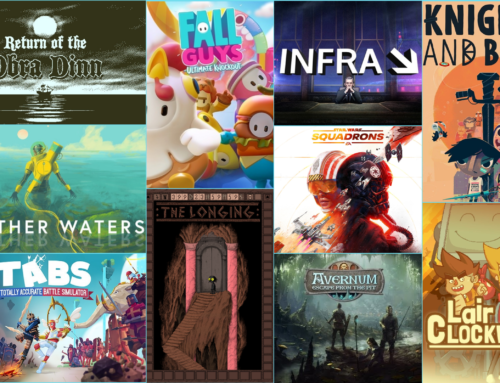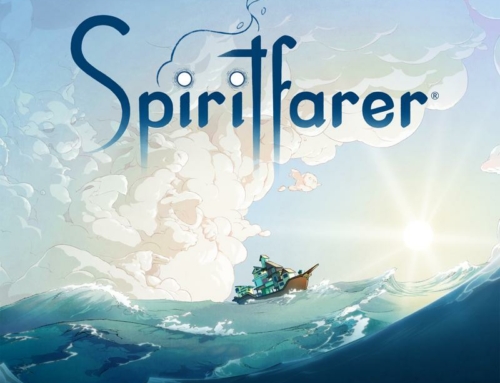Welcome to Game Club, where Joanna Price and myself exchange letters about a game we’ve jointly played. This time, we’re discussing Spycraft: The Great Game, an unusual 1996 adventure game from Activision. Also check out Letter 2, Letter 3, and Letter 4.
Dear Joanna,
I am delighted to resume our game club letters, however temporary this might be. There are a lot of cool games out there that exist in our overlapping interests. One of the niche things we both enjoy is meta-computer games, in which most of the game takes place on a fictional computer, so that both the player and the player character are sitting in front of a monitor; examples that we’ve both played include Uplink (2001) and my favorite game of last year, Hypnospace Outlaw. To continue with this trend, we decided to try Spycraft: The Great Game, an unusual FMV adventure game from 1996 that casts you as a CIA operative who spends a lot more time interpreting data on a desktop than doing thrilling fieldwork.
I ended up enjoying the game quite a bit. On one level, it’s a surprising solid adventure game; FMV adventures are widely regarded as one of the low points in computer game history for good reason, usually full of poorly-acted video clips tied together with borderline-nonsensical puzzles. Yet from the chilling intro – in which the CIA’s self-aggrandizing credo is contrasted with grim voiceover from former director William Colby – it’s clear that this is a game with both ambition and production values; the opening, first-person walk through a bustling CIA HQ probably cost more to film than entire discs from other games. The game goes out of its way to emphasize authenticity and procedural logic, and that has a nice effect on the puzzles; pretty much all of them involve combing through evidence and making inferences from them. The puzzles involved just enough lateral thinking to make me feel clever when I solved them, but not so much that I ever felt forced to use a walkthrough to solve them.
But Spycraft isn’t just an unusually good FMV game; it’s also an historic outlier that seems like a road not taken. Most adventure games establish a simple interface and a few verbs and leave you to it; Spycraft is constantly introducing new computer software and analysis tools that are practically games unto themselves. The result is a formally experimental work that sometimes veers into other genres (notably, a before-its-time stealth-FPS and simple real-time strategy) as part of keeping things fresh and making you feel like a super-spy (albeit a bureaucratic, down-to-earth one; this game seems to go out of its way to emphasize that you are not James Bond). I get the sense that the developers didn’t set out to make “an adventure game,” but rather tried to figure out how to solve the problem of FMV; namely, that it’s by definition pre-recorded and not interactive, and thus hard to build an actual game around. I think this is why you spend the vast majority of the game using computers or a PDA; this creates interactive environments that flow naturally from the first-person view, and can easily transition to video (e.g. getting video emails).
Another way Spycraft breaks from FMV tradition is that it’s somewhat nonlinear; while the plot narrows to a single point at the end, you can frequently solve puzzles in whatever order you choose, and there’s at least some choice-and-consequence as a result of your decisions (how much in practice is hard to say without replaying the game).Spycraft’s attempts to break new ground are what make it most interesting today, but are also where the pain points come from. Today, tech companies spend millions perfecting the UI on their products; it thus probably shouldn’t come as too much surprise that a small team making 15 different interfaces for in-game software would fail a lot. I consulted a walkthrough a few times during the game, and every time it was because I was because I struggled to figure out the interface of a spy tool (though the game has a decent in-game help function that I frequently forgot about). Likewise, the game often feels like it’s stretched itself beyond its budget; I frequently found there was missing connective tissue between all the different locations, puzzles, and character arcs. Events would happen so suddenly that I sometimes thought I had missed something; interesting character stories get abandoned as the game nears its conclusion, seemingly content to be red herrings for the investigative mystery.
(Spoilers past this point for those who want to play it themselves!)
Sadly, Spycraft doesn’t end on the best note; I found the ending underwhelming, the villain reveal being far less interesting or imaginative than I had hoped for given the complexity of the investigation itself. But the conclusion is unusual in one way: the head of the CIA instructs you to shoot an ally to protect a criminal that will serve CIA interests. In any other game that would be the “bad ending,” but in this game disobeying him and having moral conviction is the bad ending; not only do you get chewed out and fired, the game goes so far as to show you news reports about how your decision basically ruined the emerging stability of post-Cold-War Russia. It’s a surprisingly honest reflection of CIA culture, and I suspect it came about at least in part because of Director Colby’s involvement. Points for accuracy, but of course it’s also self-aggrandizing; OF COURSE the CIA would say that following terrible orders results in A More Peaceful And Safe World. On the other hand, I appreciate the emphasis that you are, at the end of the day, a tool for people who know better than you; you are not a video game hero, you’re an at-will employee.
I’m interested to hear your experience with the game. How does it compare to other adventure games of the period? Do you think it was successful in its ambitions? Why do you think the “Spycraft 2” promised in the credits was never made? Would a game like this succeed today?
Let me know,
Dylan





[…] [Note: This is a reply to Dylan’s opening letter] […]